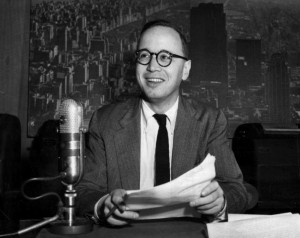Public history and policy: A synergy
08 June 2015 – Jennifer Stevens
As policy makers and politicians debate and make important policy decisions, they are constantly dealing with the past. They must consider what has been tried and failed, and what options were overlooked and why. These are questions that require an understanding of history. Without the benefit of a historian’s expertise, it’s hard to know what may be misremembered and whether we are repeating the mistakes of the past. Institutional memory can be unreliable or even absent. By analyzing policy history, professionally trained historians provide essential context that explains why certain things were done and enables policy makers to make better decisions in the present.
My own twin passions–history and politics–found a synergy years ago as I approached the end of college. At the time, I pondered which of the two areas to pursue further, and whether a choice for one necessarily meant turning my back on the other. Was it either the classroom or the campaign trail for me? When I discovered Arthur Schlesinger, Jr., in graduate school, I knew that I needed to look no further. I could be a historian, and I could pursue my other love by using my understanding of the past to help policy makers guide the future. There was a place where public history could come together with policy decisions.
Harvard historian David Armitage argues that the politician needs the historian: “History is a critical science for questioning short-term views, complicating simple stories about causes and consequences, and discovering roads not taken.”[1] As a consulting historian, Armitage’s argument is music to my ears as I continue to look for ways to use my understanding of the past to help politicians make more informed choices.
My own experience in history in the policy realm is multifaceted. I have discovered that there are many avenues that budding public historians can pursue. I have also discovered that making personal connections with policy makers and demonstrating the discipline’s value to their work is key, for today it is far from routine for policy to consider history. And yet so many of today’s policy decisions require historical footing.
My first experience with this came when a city employee approached me to write a history of land management in the Boise foothills. The City of Boise was working on a possible land exchange with the Bureau of Land Management at the time, and the exchange needed the blessing of an actual law. In drafting that law, Idaho’s congressional delegation sought a brief document that would demonstrate the significance of the foothills to Boise’s history. Here was a perfect melding of politics, public policy, and history. But it didn’t stop there. From a city’s Historic Preservation Commission, to its zoning and planning bylaws and comprehensive plan, to its arts and history endeavors, there are places for historical perspectives–something that forward-thinking politicians are beginning to see anew.
My own work now balances a complementary mix of history and policy. Another recent Boise-based project validated this mix of disciplines. The water bodies that crisscross Boise might look like natural creeks to the untrained eye, but Boise is an arid place and these are actually a mix of man-made canals and drains that don’t necessarily have a clear connection to what in bureaucratic terms is known as a designated “water of the United States.”
Teasing out this history for the thousands of water users who utilize these facilities has been important for determining whether they are subject to certain parts of the Clean Water Act. Without understanding the history of this so-called tributary system, Idaho’s Department of Water Quality was hard-pressed to know whether individual “creeks” should have their own standards or not. It was critical that these policy makers knew for sure how these facilities came to be, whether they were natural, and whether they were therefore subject to Clean Water Act regulations. This, of course, is where historical perspective is critical. Our firm’s detailed historical research into the construction of these man-made water bodies gave the department the data it needed to help guide its policy decisions. Our reports on these issues were recently posted as appendices to the Idaho Department of Environmental Quality’s draft policy suggestions, which are undergoing a public comment period now.
It is gratifying to know that the work I produce is used in a practical way. Although my firm’s work is paid work, I nonetheless feel that I am making a contribution to the public sphere, and that it is a good use of my education. Not that I don’t dream of winning the Pulitzer for a monograph someday, but in the meantime, knowing that policy decisions to which I’ve contributed can have positive ramifications for thousands of people is worth a lot.
~ Jennifer Stevens, PhD, is principal, SHRA/Stevens Historical Research Associates.
[1] David Armitage, “Why Politicians Need Historians,” The Guardian, October 7, 2014.





I am very much interested in the work you do, as I have been brainstorming ideas of ways I could transform policy using my love for public history. I am wondering where you work and what your path was to your achievements. I would appreciate any information you could give me.
Thank you,
Tess Evans
Hi Tess,
Apologies that I have not seen this request until now. Please feel free to contact me personally and we can chat! [email protected]
Best,
Jennifer